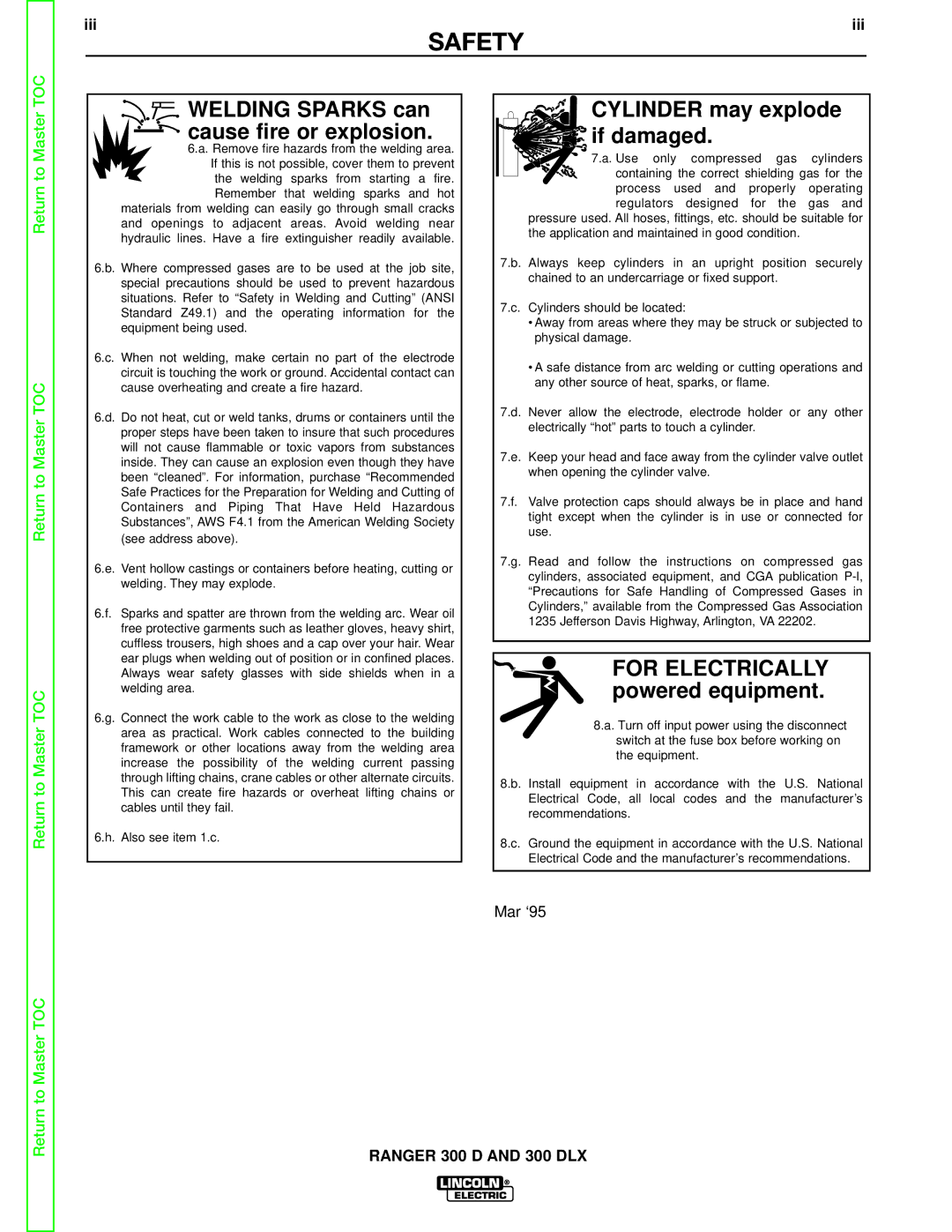SVM148-B specifications
The Lincoln Electric SVM148-B is a state-of-the-art inverter-based power source designed for both professional welders and hobbyists. As a versatile machine, it excels in a variety of welding applications including MIG, TIG, and stick welding. This machine is particularly notable for its efficiency and portability, making it an ideal choice for on-site projects or workshops where space is limited.One of the main features of the SVM148-B is its inverter technology. Unlike traditional transformer-based welders, inverter welders are typically lighter and more compact. This means that users can transport the machine more easily without sacrificing power or performance. The SVM148-B is capable of delivering a substantial amperage range, allowing for adjustments that suit various materials and thicknesses, from thin sheet metal to thicker plates.
The machine offers adjustable output levels, providing precise control over the welding process. This level of control is essential for achieving clean, strong welds and is especially useful when working with different materials. The SVM148-B is equipped with digital display features that provide real-time feedback on power settings and welding parameters, allowing welders to make quick adjustments as needed.
Another significant advantage of the SVM148-B is its duty cycle, which is designed to accommodate extended usage without overheating. A robust duty cycle means that professionals can rely on this machine for prolonged periods, making it a dependable choice for heavy-duty tasks.
The SVM148-B also includes advanced safety features such as overload protection, which ensures that the machine will shut down in the event of excessive current draw. This feature not only protects the equipment but also enhances user safety during operation.
Moreover, the machine is compatible with a wide variety of welding wires and electrodes, adding to its versatility. Whether you're working with stainless steel, aluminum, or mild steel, the SVM148-B can adapt seamlessly.
In conclusion, the Lincoln Electric SVM148-B combines advanced inverter technology with user-friendly features, making it an invaluable addition to any welding setup. Its portability, control options, robust duty cycle, and safety measures set it apart as a reliable and efficient welding solution for professionals and hobbyists alike. Whether for a small workshop or large industrial applications, the SVM148-B meets the demands of modern welding with efficiency and ease.

